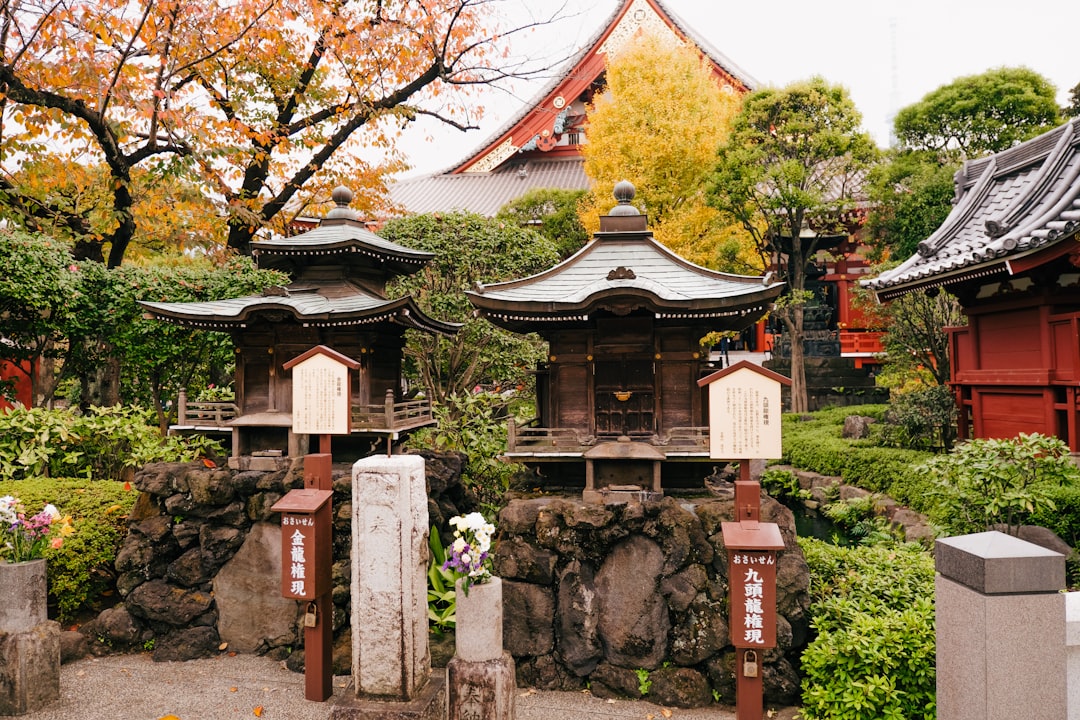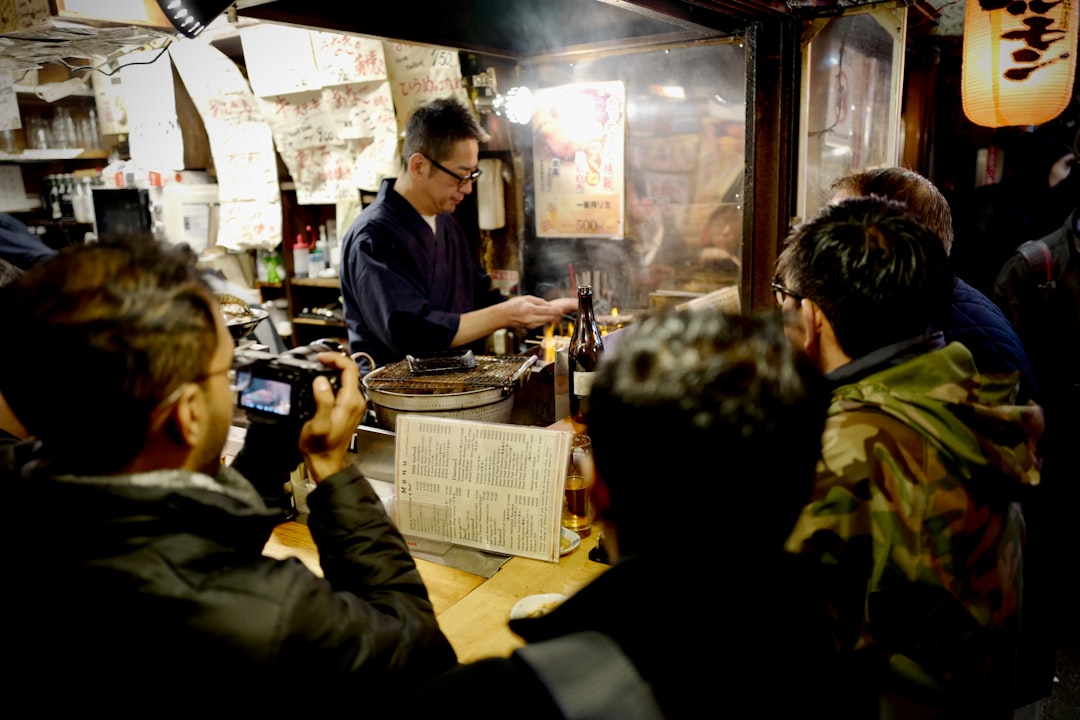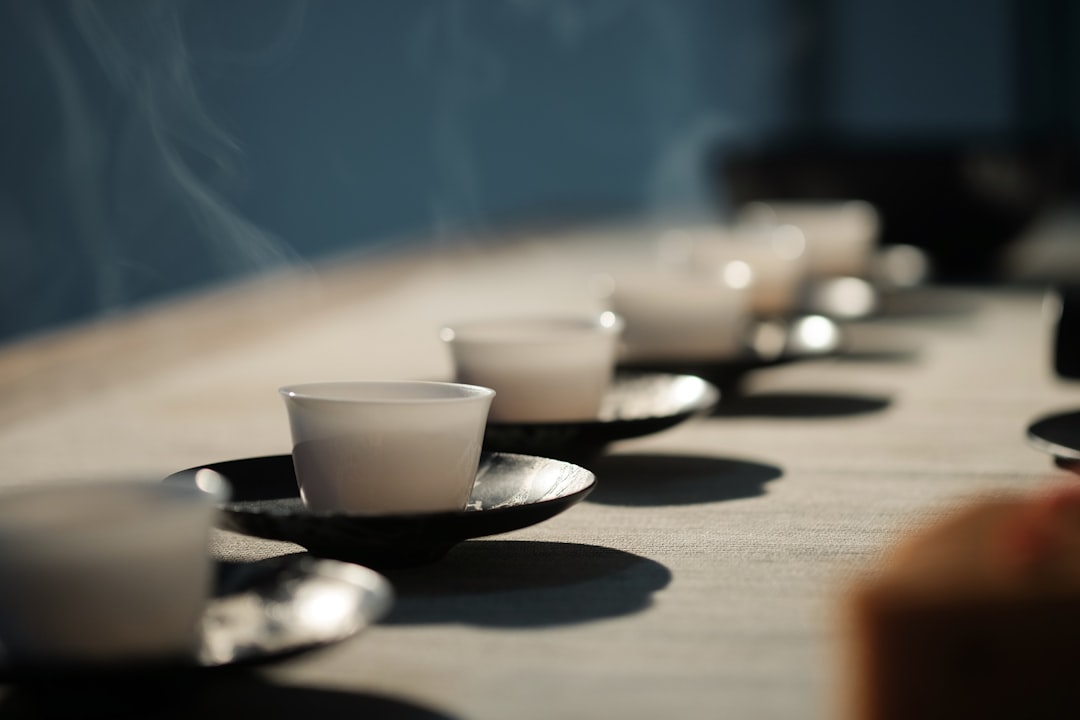Lost in Translation: An Insider’s Guide to Tokyo’s Hidden Gems
Lost in Translation: An Insider's Guide to Tokyo's Hidden Gems - Explore the Backstreets of Shibuya

Known for its enormous scramble crossing and towering skyscrapers, Shibuya is one of Tokyo's most iconic neighborhoods. But behind the neon and concrete lies a maze of backstreets waiting to be explored. Wandering these lesser-known alleys offers a fascinating look at daily life in the city.
Rather than follow the crowds to touristy spots, venture down some of Shibuya's narrow side streets. You'll quickly leave behind the flashy malls and be enveloped by a residential vibe. Tiny bars, hole-in-the-wall eateries, and quirky boutiques line the lanes. Without consulting a map, it's easy to get delightfully lost. Each turn reveals another discovery, from a cafe specializing in fluffy souffle pancakes to a tucked-away shrine covered in moss.
Begin at Center-Gai, the covered shopping street that runs behind the main train station. Pop into hidden gems like Village Vanguard, a multi-level emporium filled with quirky souvenirs and niche magazines. From there, head northwest on Koendori Dori, stopping at cozy cafes and indie shops selling handmade leather goods and ceramics along the way.
Another option is to start at Spain-zaka, a sloped alley lined with red lanterns. Wander the maze of narrow lanes nearby, which hide hip boutiques, tiny live music bars, and old-school standing noodle shops. Make sure to weave your way over to Nonbei Yokocho, an atmospheric alley crammed with teeny restaurants serving yakitori and other street food favorites.
For a more curated tour, companies like Tokyo Backstreets offer small-group walks through various neighborhoods. Local guides share insider tips and provide context to help you better understand the culture. Custom tours can also be arranged.
Wherever your explorations lead, keep an eye out for nodachi, long-handled garbage pickers used to grab trash from upper-floor apartments. Watching residents expertly snatch discarded bags as they walk by offers an amusing peek into everyday Tokyo life.
What else is in this post?
- Lost in Translation: An Insider's Guide to Tokyo's Hidden Gems - Explore the Backstreets of Shibuya
- Lost in Translation: An Insider's Guide to Tokyo's Hidden Gems - Discovering Tokyo's Hidden Shrines
- Lost in Translation: An Insider's Guide to Tokyo's Hidden Gems - Eat Like a Local in These Tiny Izakayas
- Lost in Translation: An Insider's Guide to Tokyo's Hidden Gems - Experience a Tea Ceremony in an Unassuming Cafe
- Lost in Translation: An Insider's Guide to Tokyo's Hidden Gems - See Where the Locals Shop in Daikanyama
- Lost in Translation: An Insider's Guide to Tokyo's Hidden Gems - Ride the Retro Trams of Toden Arakawa Line
Lost in Translation: An Insider's Guide to Tokyo's Hidden Gems - Discovering Tokyo's Hidden Shrines

Tokyo boasts hundreds of Shinto shrines, with famous sites like Meiji Jingu and Yasukuni Shrine attracting hordes of visitors. But hidden among the concrete jungle are dozens of lesser-known, off-the-beaten-path shrines that offer a uniquely tranquil experience. Getting lost while searching for these urban oases is one of the best ways to experience the spiritual side of Japan's bustling capital.
Stepping stones winding through small forests, moss-covered stupas peeking out from tangled greenery, and the gentle sound of wind chimes are just some of the delights found at Tokyo's hidden shrines. Unlike their touristy counterparts, these secluded spots provide a peaceful atmosphere to appreciate Shinto design principles and witness intimate rituals.
Neighborhood locals visit frequently to make offerings, ring bells, and pay respects through silent meditation. Show the same reverence and you may be rewarded with fleeting moments of magic, like watching sunlight stream through the trees or spotting a shy fox spirit. Blissfully free of crowds, there's time here to reflect.
Some favorite hidden shrines include Hikawa Shrine in Akasaka, set on wooded slopes near the Imperial Palace. Ancient wisteria vines drape its modest wooden buildings. For more solitude, head to Fudo-do in Shibamata, reached by crossing a rickety red bridge. Or escape to the bamboo grove at Sakuradamon Otorii in Yotsuya, a tiny verdant oasis amid towering skyscrapers.
Finding Tokyo's reclusive shrines takes some sleuthing, but that's part of the adventure. Avoid guidebooks and head out early before the crowds. Get delightfully lost down backstreets, following signs or serendipitously stumbling upon secluded spots tucked behind buildings or down hidden stairways. Part of the magic lies in the thrill of discovery.
Lost in Translation: An Insider's Guide to Tokyo's Hidden Gems - Eat Like a Local in These Tiny Izakayas

Forget the Michelin-starred sushi counters and glitzy hotel restaurants. To truly experience Tokyo's food scene like a local, head to its myriad tiny izakayas. At these cozy neighborhood watering holes, chefs showcase regional specialties and elevated pub grub in a convivial atmosphere.
Izakayas trace their roots back centuries as casual places for weary workers to unwind after a long day with drinks and shared bites. While mega-chains have emerged, intimate mom-and-pop joints tucked down side streets still thrive. With just a handful of tables and a narrow open kitchen, nowhere epitomizes this quintessential Japanese concept better than their holes-in-the-wall.
Arrive right at opening time and beeline to the counter to snag a seat. This prime perch lets you watch the hypnotic culinary show unfold as dishes are assembled with nimble hands. Servers will likely speak minimal English, so request an omakase course. Then sit back, sip on frosty beer and savor surprise bites like delicate hamachi sashimi, crispy karaage fried chicken and addictive edamame tossed in sesame oil.
Yakitori, skewers of chicken and vegetables grilled over bincho charcoal, often star at izakayas. In between rounds of grilled goodies, peruse the menus plastered on walls, full of tempting items like handmade gyoza dumplings, thick slices of chashu pork belly and donburi rice bowls heaped with flavorful toppings. Servers can explain unusual offerings if you're game to go beyond the standards.
Arigato in Akasaka excels at updated classics like mentaiko spaghetti tossed with marinated cod roe. Nearby in Roppongi, Jicoo the Izakaya impresses with items like foie gras chawanmushi custard. And Lombok's tropical twist includes spicy mango chicken skewers.
In Shibuya, Girandole's cozy two floors dish out impressive beef sukiyaki hot pots. Nearby Watami serves fantastic seasonal seafood like sweet shrimp and delicate conger eel. And Sakana Bar Buri, specializing in fish dishes, is a local favorite for its sushi and grilled mackerel miso soup.
Lost in Translation: An Insider's Guide to Tokyo's Hidden Gems - Experience a Tea Ceremony in an Unassuming Cafe

Tucked away on a sleepy side street in the western Tokyo suburb of Kichijoji sits a most unassuming cafe. But behind its modest facade lies an authentic tearoom offering a rare opportunity to experience a traditional Japanese tea ceremony without any pretenses.
Cafe de Ureshii, run by veteran tea master Kikuko-san, provides an intimate, informal setting to sample the ritual of chanoyu. She expertly guides visitors through the symbolic preparation and presentation of matcha, a powdered green tea. With an emphasis on tranquility and hospitality, her cerebral approach coaxes meaning from moments as mundane as cleansing hands and sipping from a bowl.
The tearoom exudes understated elegance, decked out in natural materials like wood, paper, and ceramics. After slipping off shoes, guests settle onto bamboo mats beside a sunken hearth. Kikuko-san enters, bows gracefully, and begins unpacking her tools with hypnotic precision: A bamboo ladle and scoop. A bamboo whisk. A ceramic tea bowl crafted by a local artisan.
As water gently simmers, she discusses the philosophy behind the practice and significance of each implement. The meditative conversation and simple surroundings dissolve the outside world. Time seems to stand still.
Kikuko-san then briskly whips the tea into a frothy jade foam. The first bowl is passed around and shared. The silky matcha coats the mouth with vegetal sweetness and a pleasant bitterness. A second stronger serving follows.
The whole ceremony lasts only thirty minutes, but leaves a profound impact. Beyond admiring an ancient tradition, guests connect with Kikuko-san's passion. And the insights gleaned, from treasuring ordinary moments to focusing on each task without hurry, find everyday relevance.
This sublime experience comes at an astonishingly affordable price - just 1,000 yen per person. And unlike stuffier tourist-oriented venues, no appointments are required. Kikuko-san holds informal ceremonies from 2pm to 5pm daily, welcoming all who enter with authentic warmth.
Lost in Translation: An Insider's Guide to Tokyo's Hidden Gems - See Where the Locals Shop in Daikanyama

Nestled between the bustling neighborhoods of Shibuya and Ebisu lies Daikanyama, a chic Tokyo enclave with a laid-back vibe. Free of noisy pachinko parlors and flashy advertisements, Daikanyama charms with its quiet tree-lined streets dotted with indie boutiques, cafes, and galleries. While it flies under the tourist radar, Daikanyama is beloved by stylish locals for its curated shops showcasing up-and-coming Japanese designers.
Wandering Daikanyama's shops offers a glimpse into Japan's creative side. You'll find artisan-crafted fashion, home goods, and more that aren't mass-produced or exported globally. Quality reigns over quantity. Highlights include hub Kumoya for exquisitely wrapped Japanese confections, tucked away on a pedestrian side street. Nearby at Votre Beaute, carefully curated cosmetics and skincare draw die-hard fans.
For cutting-edge fashion, look no further than Log Road Daikanyama, a strip of 17 clothing brands. Standouts include South2 West8, stocking edgy streetwear and original graphic tees. Just across the way, Journal Standard Special offers a more curated selection from the noted brand. Those with avant-garde tastes shouldn't miss real deal and United Tokyo, both showcasing experimental looks from some of Japan's most innovative young designers.
Beyond apparel lies a world of gift-worthy treasures, all locally designed. At Okura, admired ceramicist Kako Ueda crafts organic stoneware, tableware, and objets d'art from her Shigaraki studio. Nearby at Odyssey Works, find whimsical home decor alongside furniture handmade with natural materials. Pick up geometric ceramics and glassware in earthy hues at Tadafusa and sleek kitchen knives forged by artisans at Kiya.
Daikanyama T-Site, a stylish community center, provides additional retail therapy with a thoughtfully curated bookshop and a massive Tsutaya junction filled with magazines, music, and movies. Refuel at the eateries and cafes dotting the complex. Or spring for swanky high tea on the scenic top floor terrace at Sign of the Times.
Lost in Translation: An Insider's Guide to Tokyo's Hidden Gems - Ride the Retro Trams of Toden Arakawa Line

Beyond the efficient metro and sleek bullet trains zipping through Tokyo at hyperspeed lies a slower, more nostalgic form of transportation: the streetcar. While most of the city's original tram lines have disappeared over time, one charming holdout still shuttles riders along a scenic stretch up north.
The Toden Arakawa Line is Tokyo's last surviving streetcar route. Lovingly referred to as "the red strawberry train" for its bright crimson carriages, it connects Minowabashi Station with Waseda Station via Arakawa. Much of its scenic 7.4-kilometer journey hugs the Arakawa River, gliding past greenery and colorful local neighborhoods.
This low-key, low-tech ride offers a taste of an older Tokyo, evoking warm memories for locals. Many regulars have been riding since childhood. But for visitors, it provides a unique way to leave the crowds behind and witness daily life along the waterfront.
As the retro steel trams sway and clatter down the tracks, you'll pass tranquil scenes: a little girl practicing ballet on her veranda, a grandfather fishing while his grandkids splash nearby, a group of musicians loading gear for an impromptu riverside gig. Locals smile and wave as they recognize fellow regular riders onboard.
Between glimpses of laid-back riverside life, the trams pause at tiny stations sporting charming architectural details like intricate ironwork and rounded rooflines. These neighborhood hubs buzz with activity; housewives push strollers, students hop aboard lugging musical instruments, and office workers line up clutching convenience store bento boxes.
While slower and less efficient than the subway, the leisurely ride encourages you to stop and smell the roses - sometimes literally, when passing blooming riverside flowers. The unhurried pace leaves ample time to soak up views of the Arakawa River, as tranquil as the Sumida River was in old Edo-era woodblock prints.
When hunger strikes, disembark at Waseda Station and follow your nose to Ameyoko, a bustling old-timey market packed with street food vendors and tiny restaurants. Grab some takoyaki octopus balls or indulge in curry at a retro diner before hopping back aboard the tram to continue the laid-back journey.
